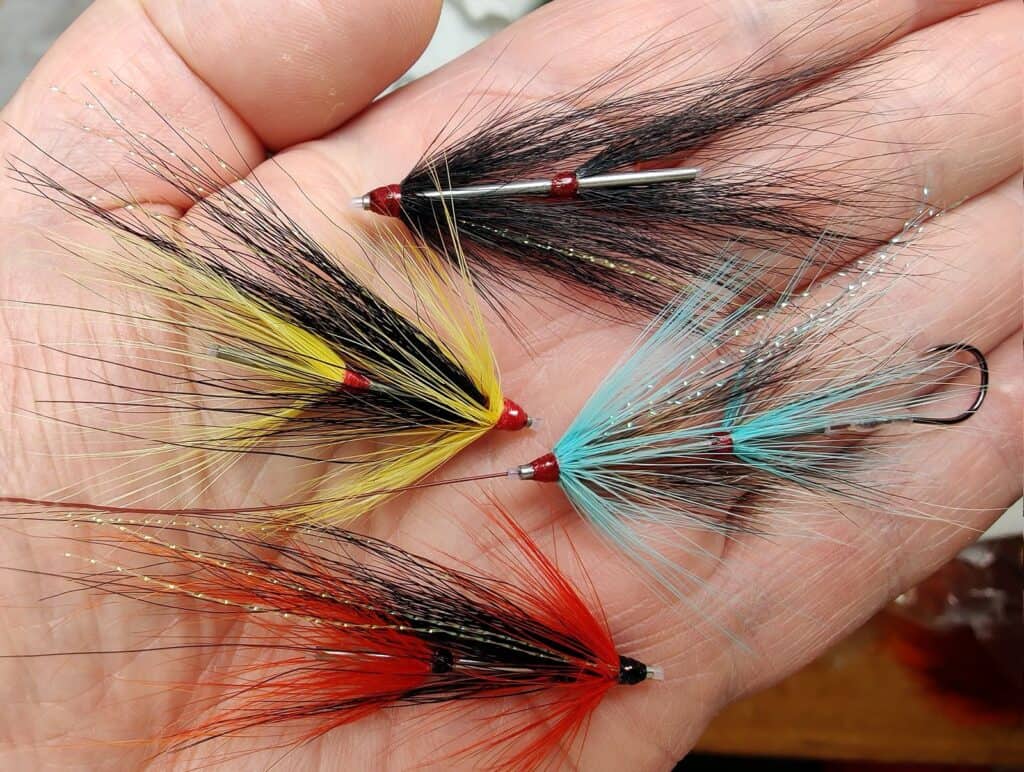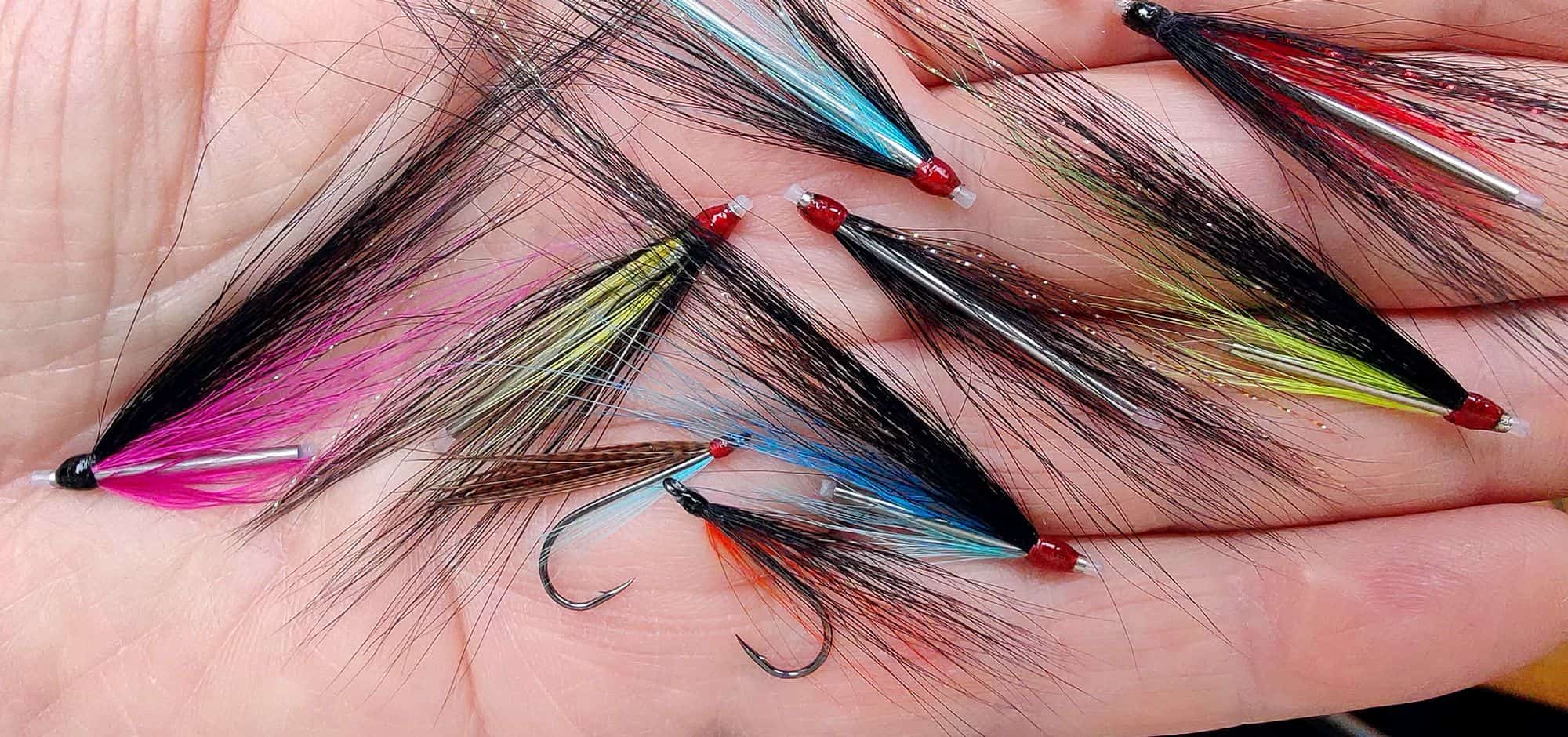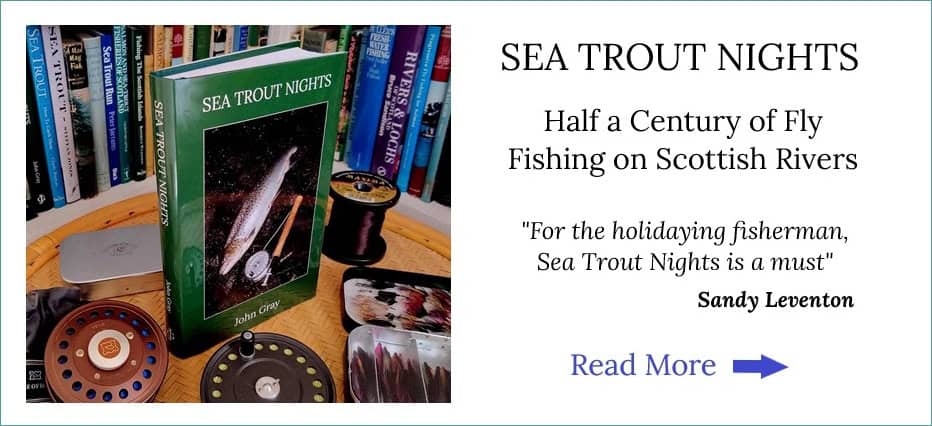Selecting Flies for a Night’s Sea Trout Fishing
Sea trout may be caught at night on a wide range of flies. The choice will be largely dictated, of course, by conditions of water and weather, time of year, location etc.. Fly selection may also be influenced by more ingrained ideas deriving from local custom and tradition, often varying widely from one region to another, each having its own uniquely special killer patterns! The traditional fisherman will invariably find success with his size 8 Teal Blue and Silver, Bloody Butcher or Mallard and Claret, while the more innovative angler might do well on a three inch long snake fly or a Jambo. Others will catch sea trout up and down the country on all sizes and shades in between. Regardless of his outlook or philosophy, whether he be a traditionalist, favouring the lovely old sea trout patterns, their origins lost in time, or one with a more experimental approach to his fly selection, he will find that the sea trout will very occasionally, at the right time and place, play his game.
My experience over the past half century spent chasing sea trout on Scottish rivers has led me to think that specific patterns have no special magic, that colour is of little importance in our sea trout flies and that any one fly will, generally, be as successful as the next – within reason. For we should, of course, apply reason, both in our selection of a fly or lure for night fishing, and in where, when and how we present it. Although adult sea trout generally cease to feed on entering our rivers in the summer months, and have no need of food, they are more likely to be tempted into taking our fly/lure if it resembles, however tenuously, something they might recognise as a prey item behaving a way they might expect; something impressionistic that reminds them of what they have recently been chasing in the salt water or the estuary. In my own fishing, I have found that the most successful flies for night time sea trout are often the simplest – slim, sparsely dressed flies and lures, for the most part intended to create an impression of a small fish. But we will rarely fish the same fly all through the night. The size of fly we start the night with is likely to be smaller than one we will fish later in the night.
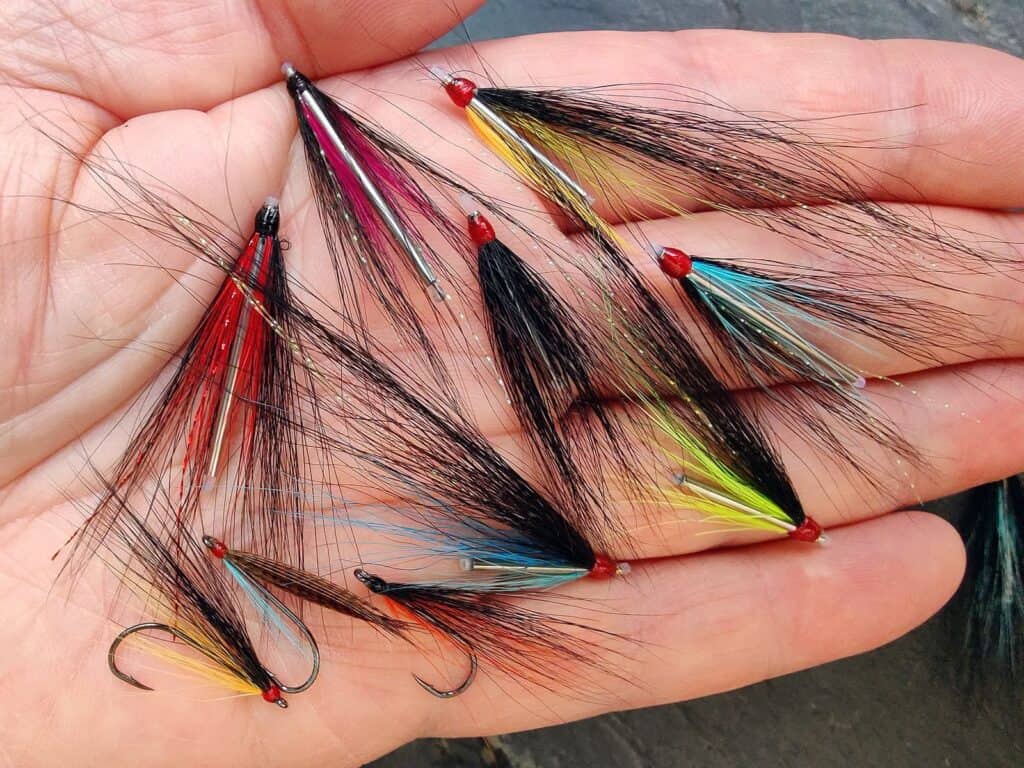
Early in the Night
I have, over the years, generally fished for sea trout pretty much exclusively during the hours of darkness, beginning only when the colour has drained from the riverside – when green turns grey. I would not be fishing for sea trout at night if the river was in spate, or if there was any significant colour in it. Ideally, the river would be running crystal clear and no higher than about six inches above summer low level, although the optimum fishable height will vary from river to river, or even from pool to pool within a river. The precise size of fly chosen to begin the night will depend on a variety of factors, e.g. the height of the river; the air and water temperature; the amount of light, as determined primarily by the cloud cover and presence of absence of a moon; the distance from the sea; the time of year, the freshness of the fish etc.. Ideal conditions – a mild, cloudy night with little wind, the river having dropped, after a recent spate, over the previous few days to a settled level within a few inches of summer low, with fresh sea trout newly arrived in our pools – will rarely prevail.
The flies shown in the photograph below are the kind of flies I would be happy to fish for the first hour or so of darkness in most conditions. In peak season, late June to early July, this would be from about 11 pm at the earliest until maybe 12.30 am. I might begin with two size eight single flies, or perhaps a small needle tube fly on the tail with a single on a dropper some four to five feet above the tail fly on a ten foot leader. The flies I begin the night with will rarely be longer than about an inch and a quarter in overall length. Sometime after midnight, when full darkness has fallen, I would usually put a longer needle tube fly on the tail, often retaining the dropper. The colour of the flies is of little consequence, since sea trout can distinguish colours at night no better than we can. We might, however, add a splash of coloured material to create a bit of contrast or tonal variation, as shown in the single flies here, which may increase the visibility or attraction of our flies. My needle tubes are often very simply dressed with nothing more than a sparse bunch of dyed black squirrel tail hair tied in top and bottom of the tube. Our flies need not be complicated to be effective. See Tying Simple Sea Trout Flies
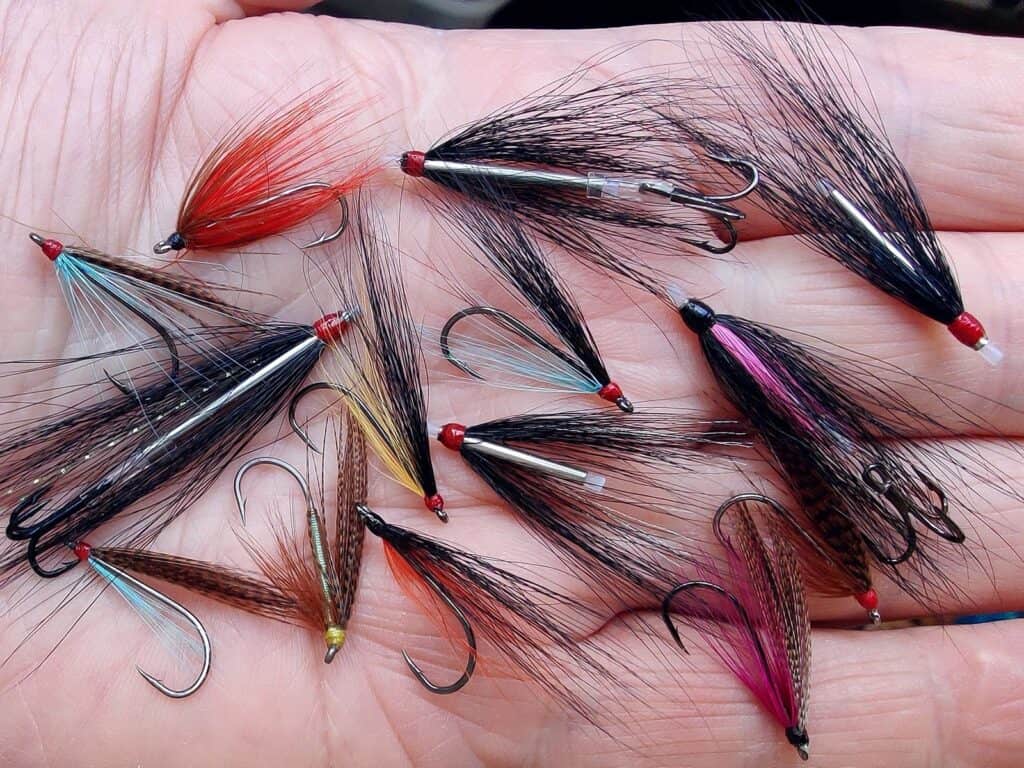
Flies for Later in the Night
The darkness will continue to intensify with the passing of midnight. The reduced visibility will often prompt a change to a longer lure, particularly if the earlier smaller flies have lost there attraction, or if the sea trout activity has fallen away, perhaps with the fish moving to deeper lies. Tube flies for later in the night might be dressed in various styles, as shown below.
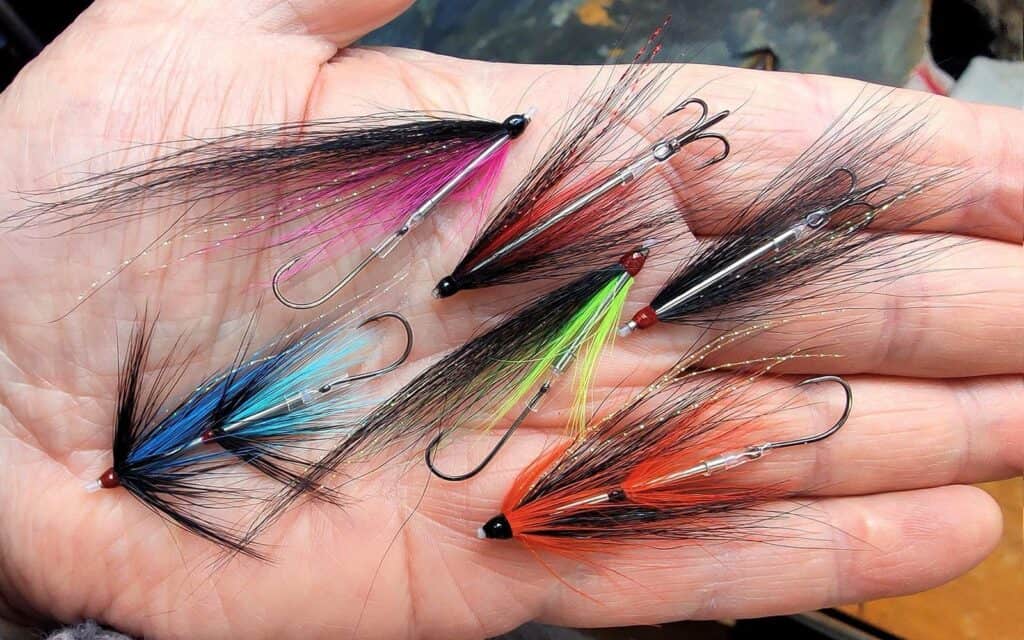
The needle tubes shown below, with an overall length of between one and a half and two inches, have often proved successful after midnight. One major benefit of of the stainless steel needle tube (in this case 30mm long with a diameter of 1.5mm) is that the polished silver tube requires no body dressing, making for simplicity in the dressing of the lure. The needle tube, being slim and reasonably light in weight, is also easily cast on a single-handed rod, sinking readily to a good fishing depth, fishing deeper than an aluminium tube but not as deeply as the heavier and bulkier copper tube.
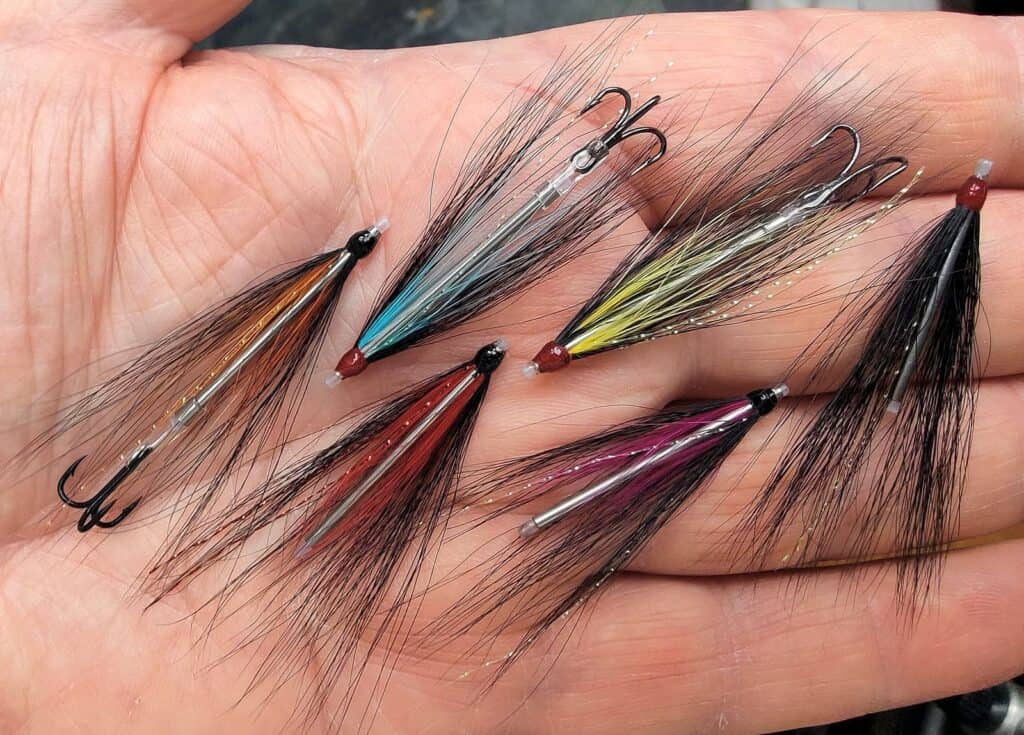
These Needle Tube Flies have been dressed on 30mm needle tubes, 1.5mm in diameter. They are up to about two inches in total length, a good general length for late night sea trout. I would normally use this style of needle tube fly with small treble hooks, something like the narrow-eyed Owner Stinger tube fly treble (STN-36 BC) in a size 14. Other styles of tube fly, for salmon and sea trout, might be better suited to a single hook.
More Late Night Sea Trout Tube Flies
Needle tubes may be dressed in various styles. Those shown below have been dressed on shorter needle tubes (20mm long) than the examples above. The dressings are again simple and sparse, with a long hair wing (this might be squirrel, Arctic fox or goat hair) with an underwing in a contrasting colour and a sparse beard hackle to create tonal variation. The overall length of such needle tube flies might be anything up to about three inches, a relatively long lure yet still lightweight and easily cast. Such tube flies might also be effective for salmon during the day. They can, of course, be dressed on any length of needle tube.
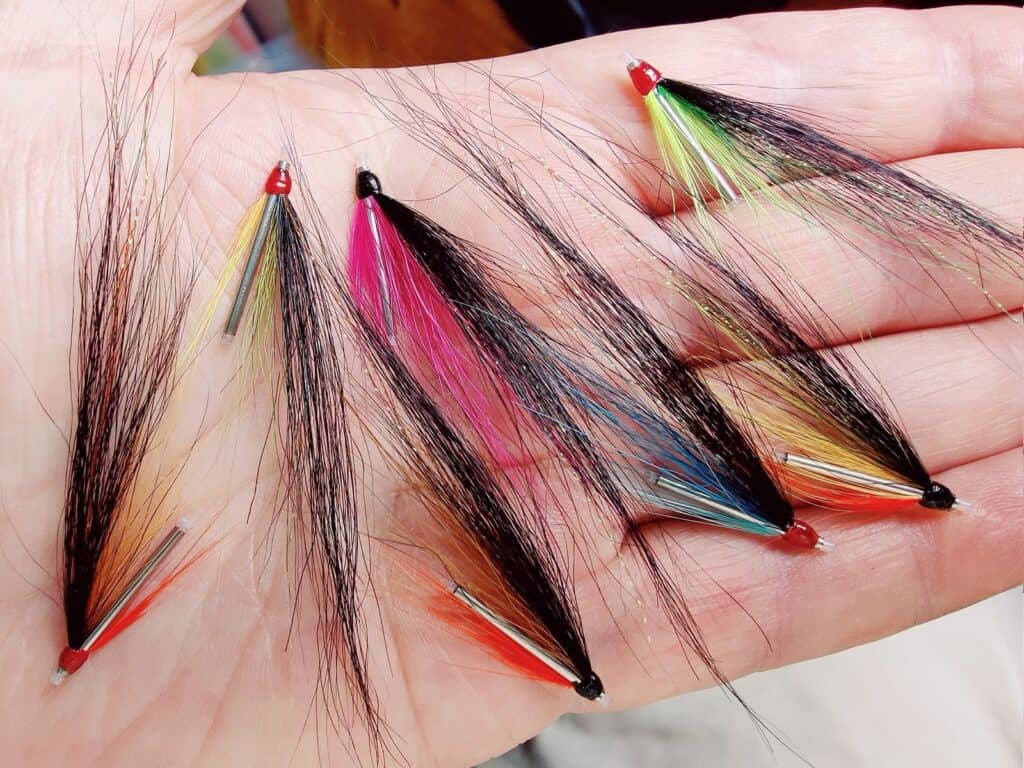
Another option for a late night sea trout lure with a bit of presence is the Sea Trout Intruder, which may be dressed in a variety of lengths and colours, as shown below.
